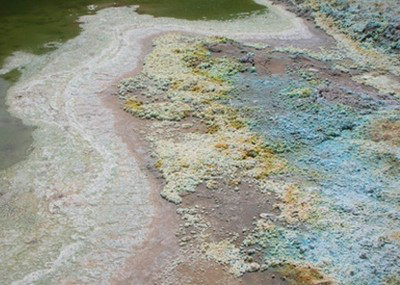
Wastes issued from mining and mineral processing (rock, sediment, dust, gas, tailings, ash, metallurgical wastes and processing chemicals) are unwanted and uneconomic materials and are found at or near mine sites in virtually every country in the world.
Such wastes are potentially toxic, corrosive or radioactive, or a combination of these, and may therefore contaminate water, land and air, posing threats to the health of organisms, plants, animals and humans. The risk they pose may be magnified by natural process, such as wind, river flow, floods, landslides and earthquakes, which can disturb and redistribute the wastes and spread them considerable distances from their initial sites of disposal.
Globally there is an ever-increasing awareness of the hazards posed by mining wastes and the need to identify, understand and reduce the risks they pose. Members of the Environmental Hazards Group are world leaders in this endeavour. They focus mainly on the hazards and exposures to them, but increasingly look at vulnerability issues. As risk management of mining wastes is so complex and interdisciplinary, the group has developed exceptional effective working relationships with business, industry, government, communities, civil society organisations, academia and research organisations.
Prof. Karen Hudson-Edwards and colleagues from Aberystwyth University, Bangor University, Liverpool John Moores University and the University of Northern British Columbia, Canada, have received a NERC Urgency grant to work on the project 'The environmental impact of the Mount Polley mine tailings spill and related clean-up operations, British Columbia, Canada'. The spill, which occurred on August 4th, 2014, resulted in the discharge of 10 million m3 of water and 4.5 million m3 of copper-, selenium- and vanadium-bearing tailings to local waterways. The team are investigating the geochemical stability and reactivity of the spilled tailings, and the the impacts of the spill and related clean-up operations on longer-term recovery of terrestrial and aquatic environments.
 Close
Close


